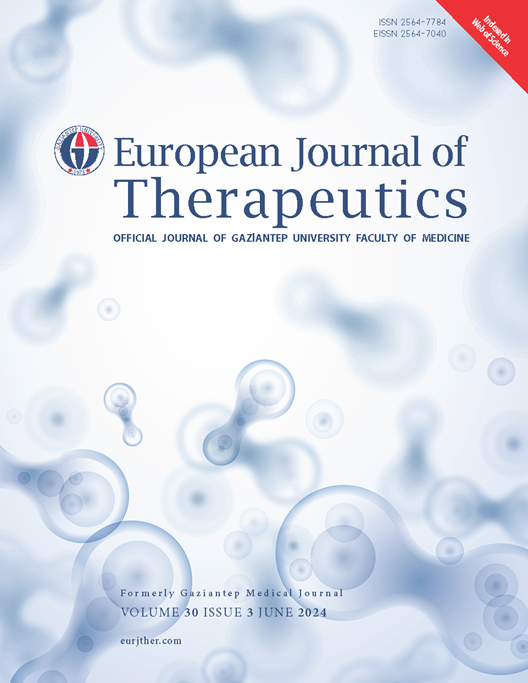Corticosteroids and Immunosuppressants on Oral Lichen Planus’ Treatment
DOI:
https://doi.org/10.58600/eurjther2111Keywords:
corticostreoids, immunosuppresants, oral lichen planus, therapy-topicalAbstract
Dear Editor,
Lichen planus (LP), a chronic inflammatory condition primarily targeting skin and mucous membranes, was first outlined by Wilson in 1869 and histologically by Dubreuilh in 1906 [1]. It predominantly affects women in their 4th and 5th decades [2]. Oral lichen planus (OLP) occurs mainly on the buccal mucosa, gingiva, and tongue, presenting in six types, with erosive ones causing eating discomfort. While 25% of LP cases manifest solely orally, some lesions can appear in areas like the anogenital region and esophagus [2].
OLP is postulated to be a T cell-mediated response to antigens, with potential ties to chronic liver diseases and higher prevalence in regions like Japan and Southern Europe [3]. Comorbidities like diabetes, hypertension, and stress may also contribute [4]. Dental materials can mimic OLP, and specific drugs, including NSAIDs and beta-blockers, might induce it in some individuals [5].
Asymptomatic OLP lesions generally need no treatment. For symptomatic forms, treatment targets symptom alleviation and lesion removal, primarily using topical corticosteroids. Resistant lesions may require intralesional or systemic corticosteroids, with alternatives like immunosuppressives, retinoids, antifungals, and metronidazole also being effective [6].
OLP has a premalignant nature with a 0.4-1.74% risk of turning malignant, typically from its atrophic or erosive form [7]. Treatment aims to alleviate pain, heal ulcers, minimize cancer risks, extend symptom-free periods, and uphold oral health. This report presents intralesional corticosteroid therapy for three patients with symptomatic OLP, presenting symptoms like pain and burning.
Metrics
References
Olson MA, Rogers III RS, Bruce AJ (2016) Oral lichen planus. Clin Dermatol. 34(4):495-504. https://doi.org/10.1016/j.clindermatol.2016.02.023
Zakrzewska JM. Re: Mollaoglu N (2001) Oral Lichen Planus: A Review. J Oral Maxillofac Surg. 2000; 38: 370-377. Br J Oral Maxillofac Surg. 39(5):407. https://doi.org/10.1054/bjom.2000.0335
Klanrit P, Thongprasom K, Rojanawatsirivej S, Theamboonlers A, Poovorawan Y (2003) Hepatitis C virus infection in Thai patients with oral lichen planus. Oral Dis. 9(6):292-297. https://doi.org/10.1034/j.1601-0825.2003.00955.x
Ivanovski K, Nakova M, Warburton G, Pesevska S, Filipovska A, Nares S, Nunn ME, Angelova D, Angelov N (2005) Psychological profile in oral lichen planus. J Clin Periodontol. 32(10):1034-1040. https://doi.org/10.1111/j.1600-051X.2005.00829.x
Zhao Z, Savage N, Sugerman P, Walsh L (2002) Mast cell/T cell interactions in oral lichen planus. J Oral Pathol Med. 31(4):189-195. https://doi.org/10.1034/j.1600-0714.2002.310401.x
Sivolella S, Berengo M, Cernuschi S, Valente M (2012) Diode laser treatment is effective for plaque-like lichen planus of the tongue: a case report. Lasers Med Sci. 27:521-524. https://doi.org/10.1007/s10103-011-0970-6
Rödström PO, Jontell M, Hakeberg M, Berggren U, Lindstedt G (2001) Erosive oral lichen planus and salivary cortisol. J Oral Pathol Med. 30(5):257-263. https://doi.org/10.1034/j.1600-0714.2001.300501.x
Downloads
Published
How to Cite
Issue
Section
License
Copyright (c) 2024 European Journal of Therapeutics

This work is licensed under a Creative Commons Attribution-NonCommercial 4.0 International License.
The content of this journal is licensed under a Creative Commons Attribution-NonCommercial 4.0 International License.


















